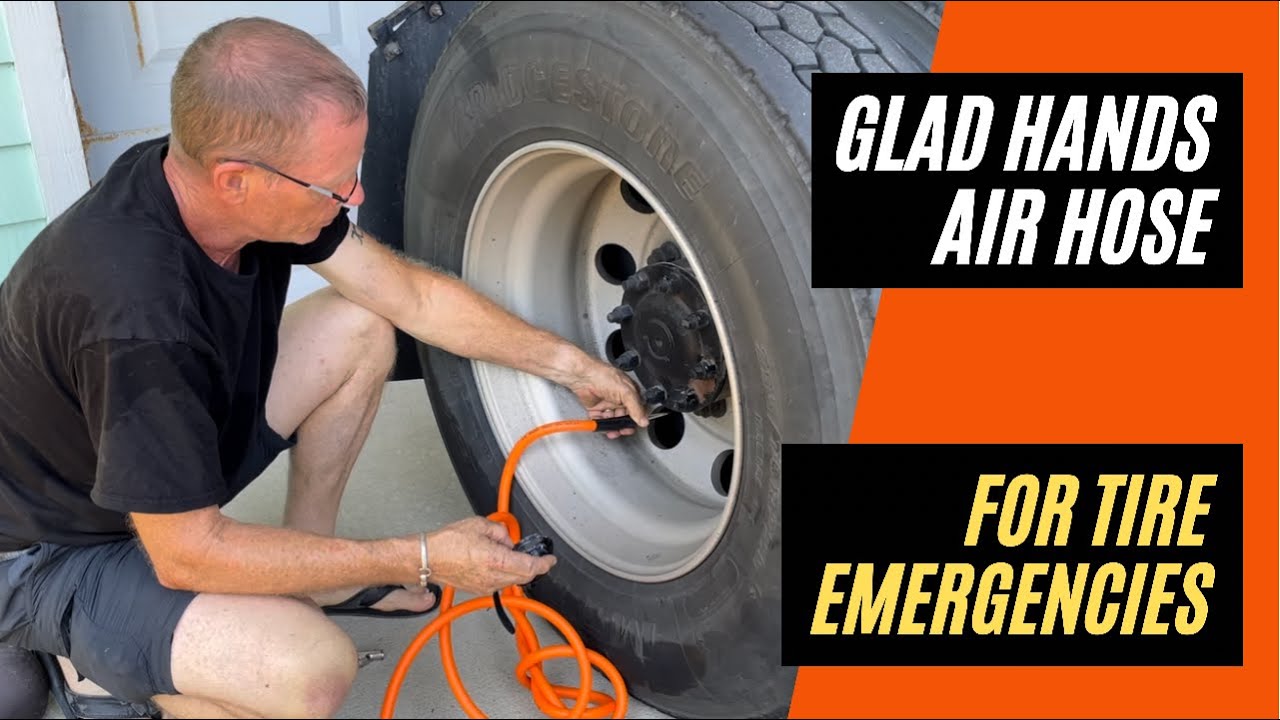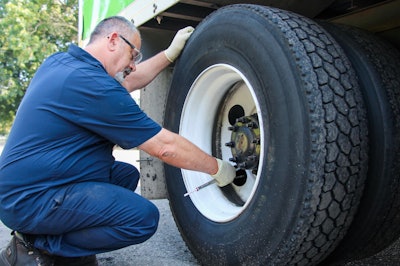
To put air in semi truck tires, use a pressure gauge to check the current air pressure. Then, use an air compressor to add air as needed.
Properly inflated tires are critical for the safety and performance of a semi-truck. In this guide, we’ll walk you through the simple steps to ensure your semi-truck tires are properly inflated. Maintaining correct tire pressure not only extends tire life but also contributes to better fuel efficiency and road safety.
Read on to learn how to effectively and safely put air in semi-truck tires using a pressure gauge and an air compressor.

Credit: m.youtube.com
Navigate As You Want: [show]
Importance Of Proper Tire Inflation
Proper tire inflation is of utmost importance for semi trucks. It ensures better fuel efficiency, improved handling and performance, and enhanced overall safety on the road. When tires are not properly inflated, several problems can arise. Underinflation can lead to increased rolling resistance, causing the engine to work harder and consume more fuel. It can also result in excessive tire wear, reduced traction, and potential blowouts. On the other hand, overinflation can cause poor handling, decreased tire lifespan, and an uncomfortable ride. Additionally, improper tire inflation can negatively impact the vehicle’s braking and steering capabilities, posing a serious safety risk. Therefore, it is crucial to regularly check and maintain the proper inflation pressure for semi truck tires to ensure optimal performance, extend tire life, and guarantee the safety of the driver, passengers, and other road users.
Properly inflated tires offer numerous benefits. Firstly, they contribute to improved fuel efficiency. With the right air pressure, tires roll more easily, reducing the energy required for propulsion and minimizing fuel consumption. Secondly, they ensure even tire wear, maximizing the lifespan of the tires. Uniform wear prolongs tire longevity and saves money on replacements. Thirdly, proper tire inflation enhances vehicle stability and handling, providing better control and responsiveness on the road. This is particularly crucial for heavy commercial vehicles like semi trucks operating in diverse driving conditions. Lastly, maintaining the correct tire pressure promotes optimal traction, especially in wet or icy conditions. This improves the vehicle’s ability to grip the road, reducing the risk of accidents and enhancing overall safety.
Improper tire inflation can have severe consequences. Not only does it impact fuel efficiency and tire lifespan, but it also affects the overall safety of the vehicle. When tires are underinflated, they generate more heat, leading to an increased risk of a tire blowout. This sudden tire failure can cause the driver to lose control of the vehicle, resulting in accidents and injuries. Furthermore, underinflated tires have reduced traction and stability, making it harder to maneuver and stop the truck efficiently, especially in emergency situations. On the flip side, overinflated tires have a smaller contact area with the road, which reduces traction and compromises the vehicle’s ability to grip the surface. This can lead to skidding, loss of control, and accidents. Therefore, maintaining proper tire inflation is crucial for ensuring the safety of both the driver and other road users.

Credit: www.ccjdigital.com
Understanding Tire Pressure And Load Rating
Tire Pressure: Ensuring proper tire pressure is crucial for the safety and performance of semi truck tires. Underinflated tires can lead to increased fuel consumption and uneven tire wear, while overinflation can result in reduced traction and handling. Regularly check tire pressure using a reliable gauge and adjust as needed.
Load Rating: Understanding the load rating of semi truck tires is vital for maintaining safe operation. The load rating indicates the maximum weight a tire can bear at a specified pressure. It’s essential to match the load capacity of the tires with the actual weight they will carry to prevent overloading, which can lead to tire failure.
Tools And Equipment Needed
To put air in semi truck tires, you will need the following tools and equipment:
- Tire pressure gauge
- Air compressor
- Valve stem tool
Step-by-step Guide To Putting Air In Semi Truck Tires
Start by checking the current tire pressure before inflating the tires. This can be done using a tire pressure gauge. Remove the valve stem cap and firmly press the gauge onto the valve stem. The gauge will provide a reading of the tire pressure, which should be compared to the recommended PSI (pounds per square inch).
Once you have determined the current tire pressure, it’s time to begin the inflation process. Begin by removing the valve stem cap from the tire. Attach the tire pressure gauge onto the valve stem to ensure an accurate reading. Take note of the current PSI.
Using an air compressor or a portable air pump, begin inflating the tire. Slowly add air, periodically checking the pressure using the gauge. Inflate the tire to the recommended PSI, being cautious not to overinflate.
After inflating the tire, recheck the pressure using the gauge. If the tire pressure is within the recommended range, you can move on to the final step. If not, adjust the pressure accordingly until it reaches the appropriate PSI.
Once the tire pressure is at the desired level, replace the valve stem cap securely. This will help to prevent dust, debris, and moisture from entering the valve stem and causing potential issues in the future.
Regular Tire Maintenance And Tips
Regular tire maintenance is crucial for the overall performance and safety of your semi truck. Frequent tire inspections are necessary to ensure that the tires are in good condition and free from any signs of wear or damage. Inspect the tread depth regularly to determine if it meets the recommended levels. Additionally, make sure to rotate the tires periodically to promote even wear and extend their lifespan. Proper rotation helps distribute the load evenly, ensuring that the tires wear evenly over time. Lastly, maintaining the correct tire pressure is essential for optimal performance. Properly inflated tires not only ensure better fuel efficiency but also provide improved traction and handling. Always consult the manufacturer’s guidelines for the recommended pressure levels. By following these tire maintenance tips, you can ensure safer and more efficient journeys with your semi truck.

Credit: www.fleetequipmentmag.com
Frequently Asked Questions On How To Put Air In Semi Truck Tires
How Do You Put Air In Semi Truck Tires?
To put air in semi truck tires, start by locating the valve stem on each tire. Remove the valve cap, and insert the air hose nozzle. Press down on the nozzle to release air, and then check the tire’s pressure using a gauge.
Add air as needed until the proper pressure is reached.
What Is The Recommended Tire Pressure For A Semi Truck?
The recommended tire pressure for a semi truck depends on various factors such as tire size and load. However, a common rule of thumb is to maintain a tire pressure of around 100 psi for the front tires and 80 psi for the rear tires.
It is crucial to consult the tire manufacturer’s guidelines for precise recommendations.
How Often Should You Check The Tire Pressure On A Semi Truck?
It is essential to check the tire pressure on a semi truck regularly. Ideally, you should check it before each trip and once a week if the vehicle is in use continuously. Fluctuating temperatures and long journeys can cause tire pressure to change, so regular checks are vital to ensure optimum safety and performance.
Conclusion
To conclude, properly inflating the tires of a semi truck is essential for optimal performance and safety on the road. By following the simple steps outlined in this blog post, you can ensure that your tires are always filled with the right amount of air.
Regularly checking tire pressure, using the correct equipment, and understanding the recommended PSI are key factors in maintaining your semi truck’s tires. Take the time to implement these practices, and you’ll experience smoother rides and increased fuel efficiency. Safe travels!





